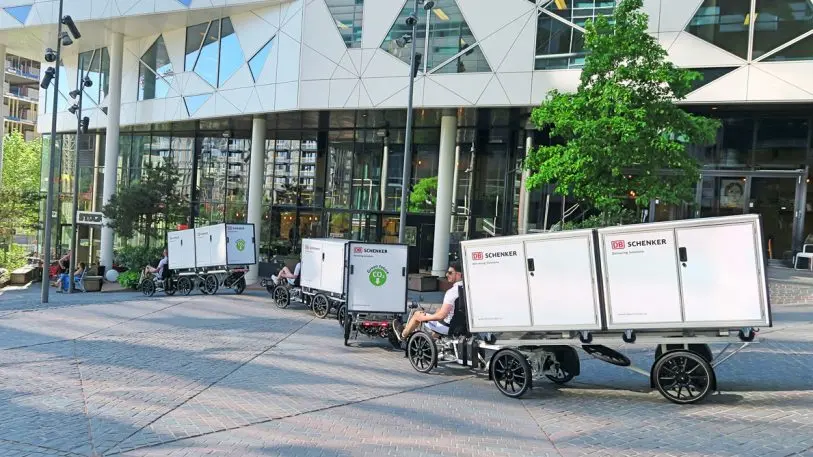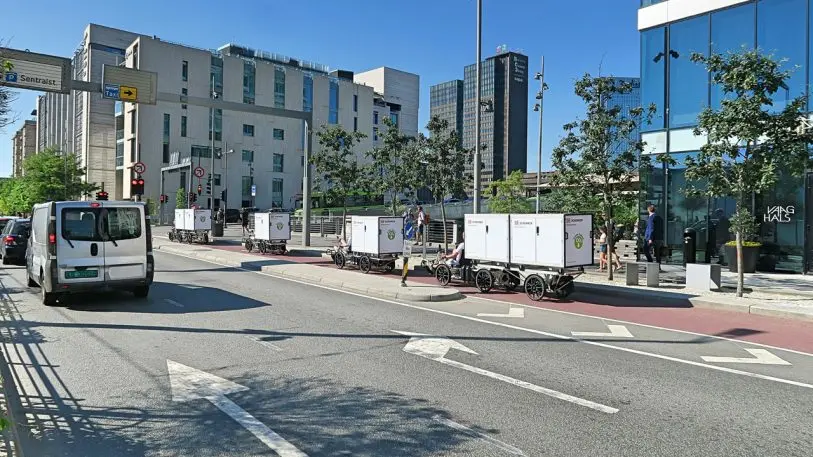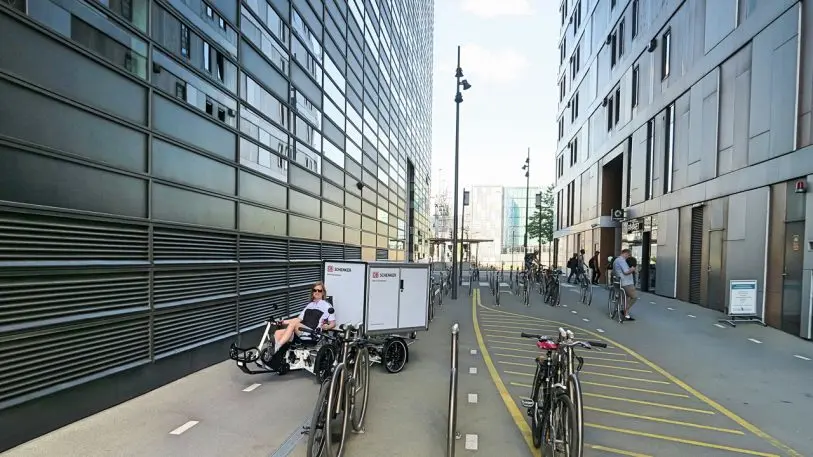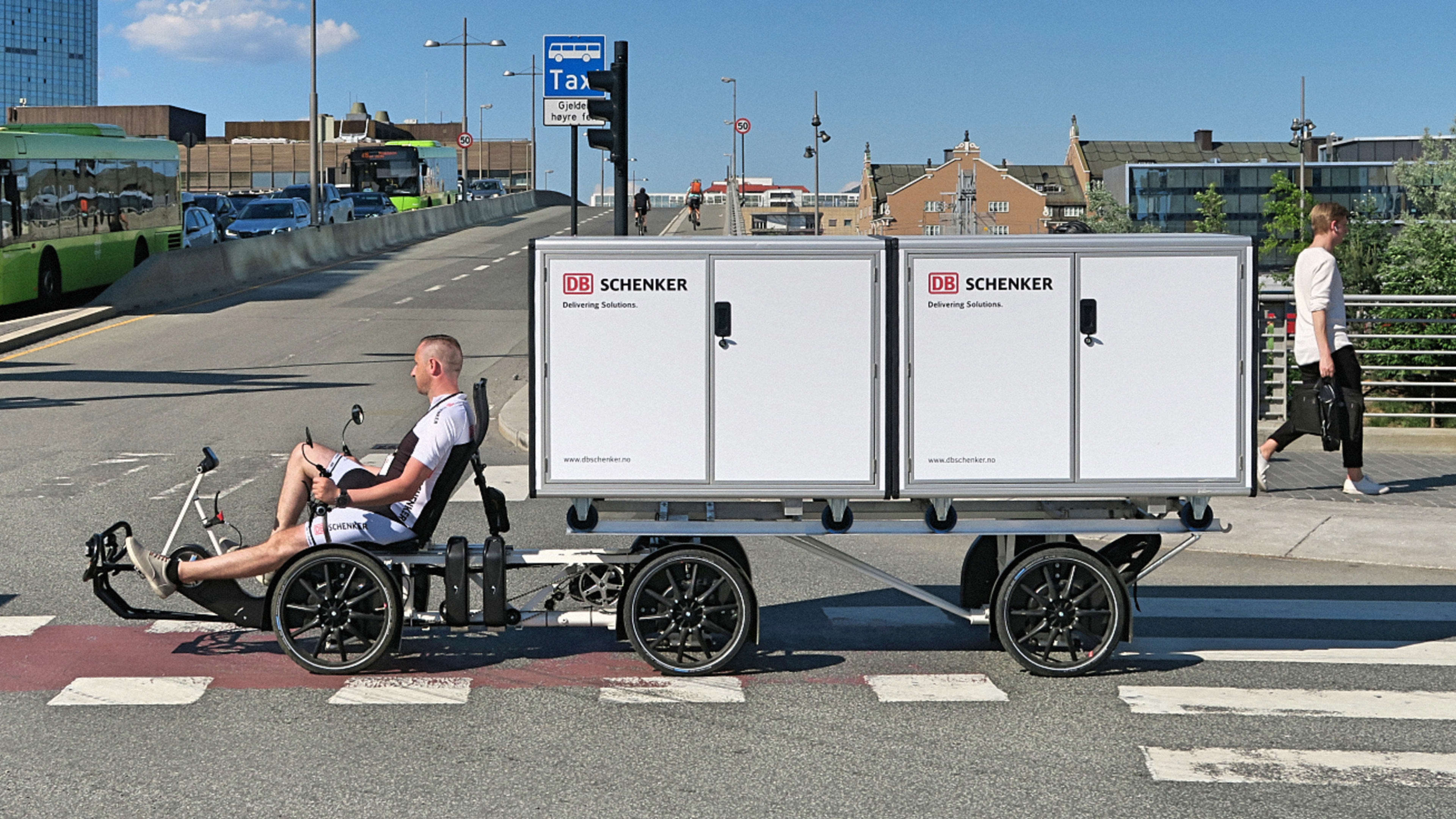On bike lanes in downtown Oslo, a logistics company is making deliveries in a vehicle that looks a little like a miniature freight train–an electric cargo bike with two boxes on the back that can carry more than 600 pounds of packages.
For the delivery company, DB Schenker, the bikes are a way to avoid traffic; unlike most other cargo bikes, they’re narrow enough to fit in bike lanes. In tests, the company found that the bikes increased productivity by 40%. For the city, they’re one small part of a move to become carbon neutral in a little more than a decade.

In the center of Oslo, the city is removing parking spaces, closing streets to traffic, improving public transportation, handing out grants for cargo bikes, and building 40 miles of new bike lanes as it prepares to make the entire center car-free by 2019. When the changes began, there was resistance. But the mayor of Oslo says that more people are beginning to see new opportunities.
“Private enterprises are embracing these initiatives,” says Raymond Johansen, the governing mayor of Oslo. “In the beginning, they were critical. But they are seeing that so many markets are going to be disrupted. They want to be front-runners and see how they can create new jobs in the green sector.”
Spurred by purchase orders from the city, construction companies are beginning to use new equipment–from concrete mixers to cranes and giant excavators–that can run on electricity, so all of the city’s future construction sites can be both quiet and emissions-free. (Oslo’s city-owned electric company runs almost entirely on hydropower, so electrifying anything automatically cuts emissions.)

Four kindergartens and two sports arenas are currently under construction under the city’s new zero-emissions standard for construction. Another pilot project driven by city procurement is testing fossil-fuel free demolition, while a third is testing on-site renewable energy generation.
At a data center in Oslo, the extra heat from servers will now be pumped into a district heating system, where it will be able to heat around 5,000 apartments in the city. Right now, district heating–a system that sends heat from a central location to houses and buildings–covers around 20% of the city, and already runs on renewable power (some of it, controversially, comes from an incineration plant, though the plant is now working to capture all of the emissions it generates). To meet its goal to become carbon neutral, the system will have to scale up.
As businesses begin to embrace the changes, some residents also need to be convinced. The car-free city center is controversial. “Car drivers want no congestion, no tolls, and plentiful cheap parking, and bike riders or city dwellers want open space and bike lanes,” says Glen Peters, senior researcher at Norway’s Center for International Climate and Environmental Research. “The challenge is that some people have become dependent on a car–15 minutes to work in a car versus 45 minutes in a bus. There will be some transitional pain, and the local council needs to sell a good narrative to convince car drivers they will be happier in the future.”

Transportation makes up the biggest part of the city’s carbon footprint, and as it works to reduce driving, the city is also pushing more people to choose electric cars. Outside of the city center, the city is planning new “low-emission zones” where it’s only possible to drive with an electric car or other cars that don’t pollute. A congestion tax and new toll roads for non-electric cars also cut traffic. FutureBuilt, a program run by the city, is deploying pilot projects such as a new office building that has space for 500 bicycles and 10 electric charging stations, but no room for conventional cars. In four years, only zero-emission taxis will be allowed on the road, and it won’t be possible to buy a diesel or gas-fueled car anywhere in Norway.
The city is already the world leader in electric cars. Last year, more than half of all cars sold in the city were electric. That came after years of work to shift the market–making the cars cheap to buy by removing taxes, and cheap to use by offering free charging, free parking, and other perks. A network of chargers–including in a massive parking garage built only for electric cars–makes the cars easier to use. The city is now tripling its deployment of charging points, and working with companies to build chargers both inside and outside the city.
For the city to reach its goal to become carbon neutral by 2030, the biggest obstacle may be getting enough support from the public. “Many are supportive of the targets but are not so supportive of the necessary actions required to achieve the targets,” says Peters.
“I think we need to get people on board–they need to experience and see the change of habit also will be favorable for them,” says Johansen. “If they see it just as a hassle, then they will not support our policy. That’s really the biggest challenge.”
Recognize your brand’s excellence by applying to this year’s Brands That Matter Awards before the early-rate deadline, May 3.
